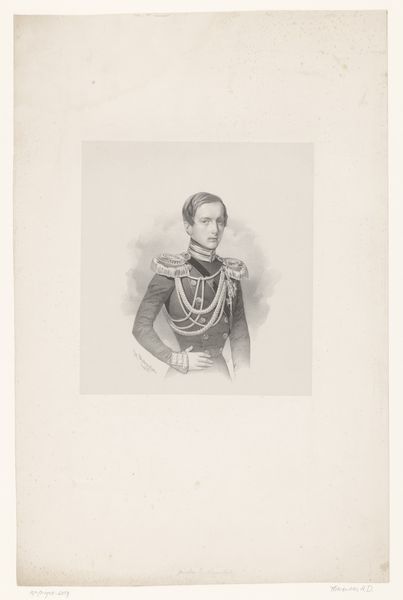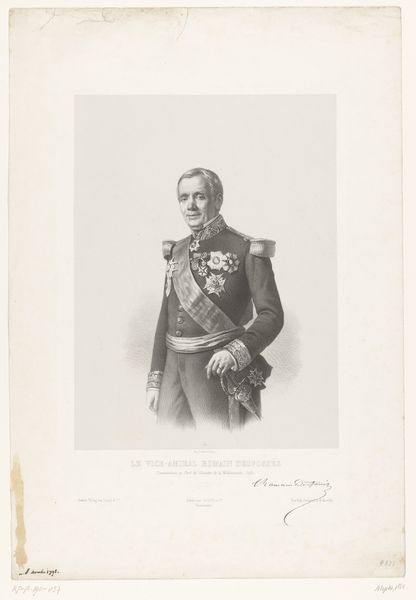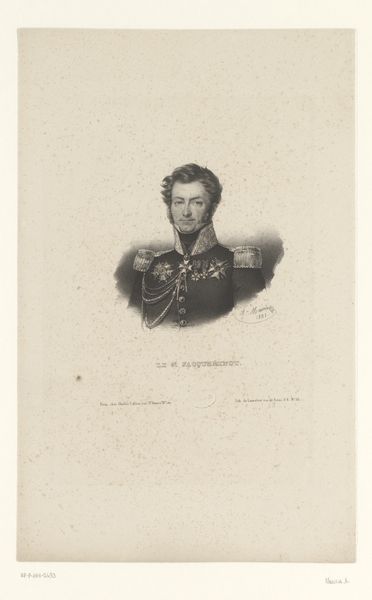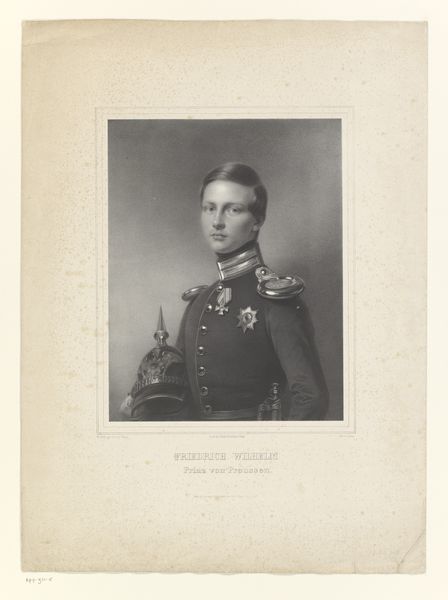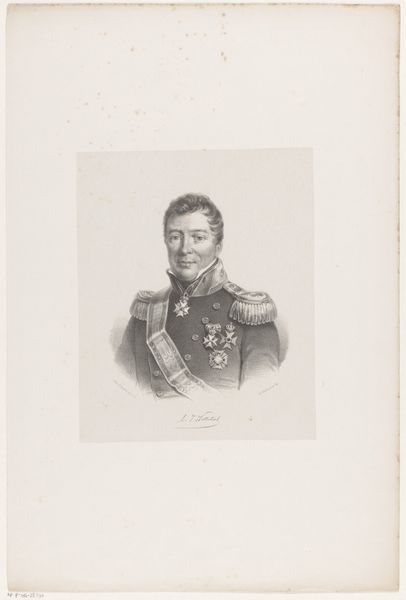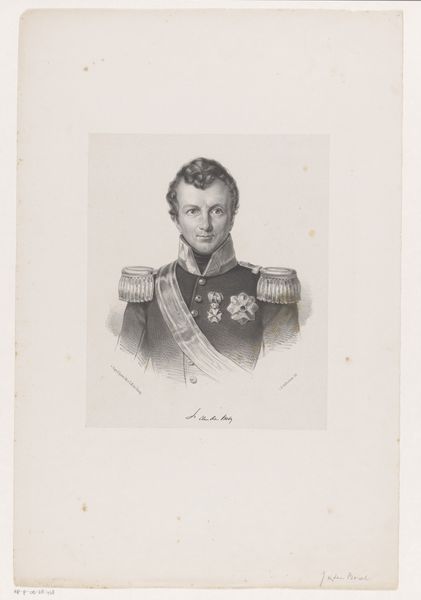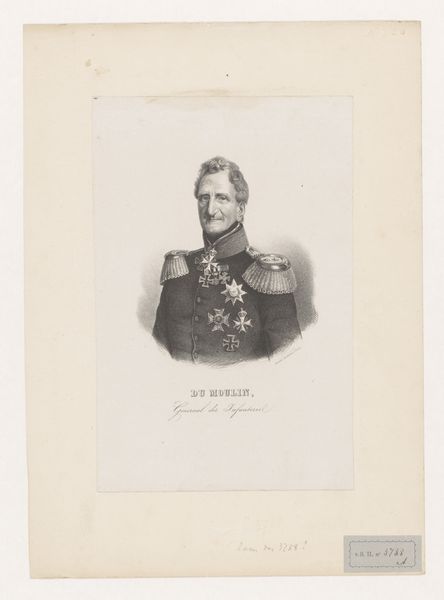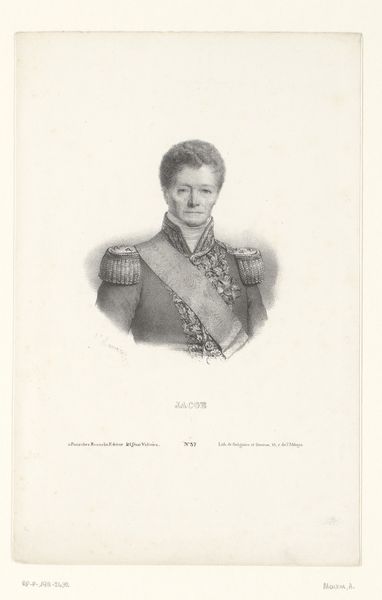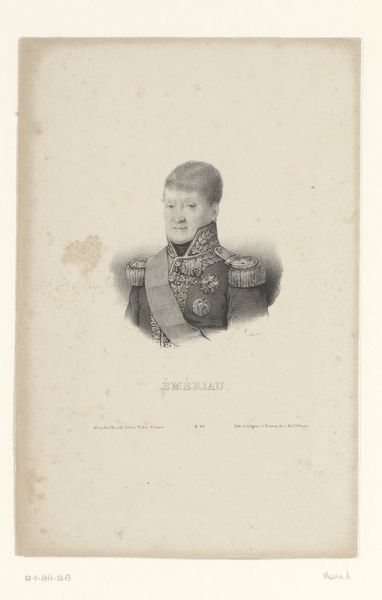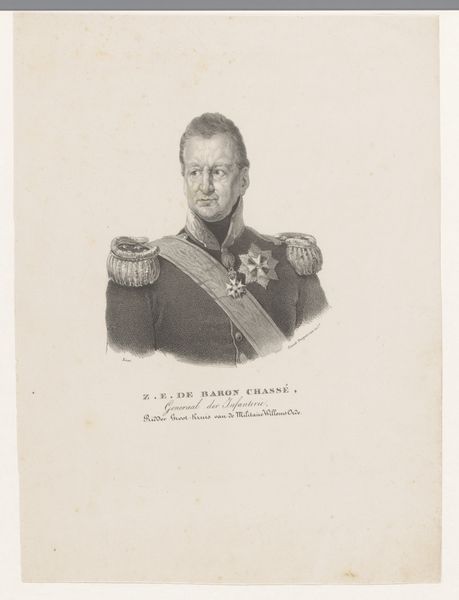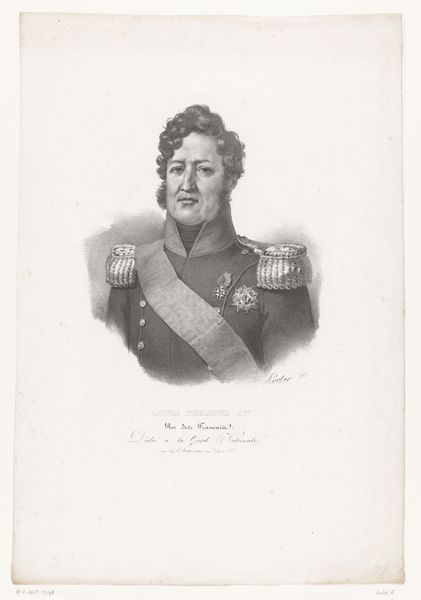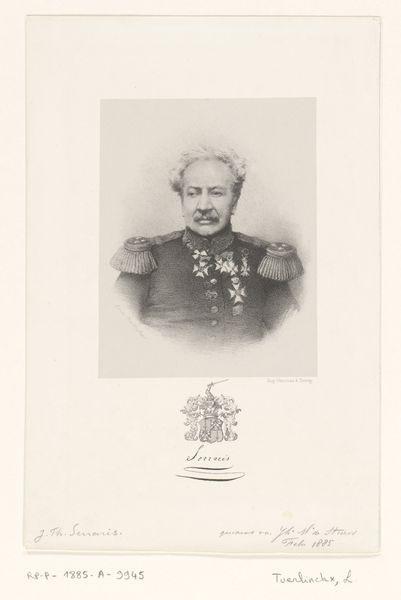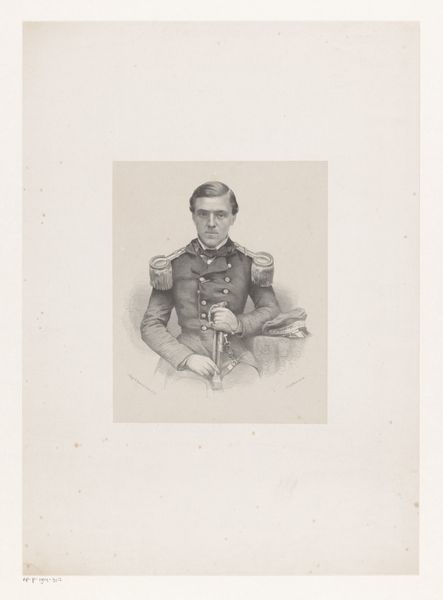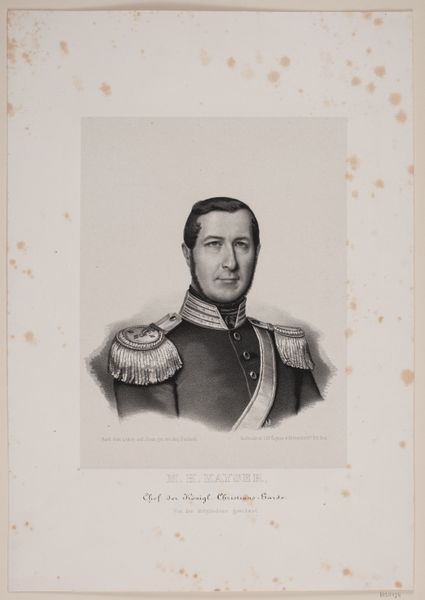
drawing, print, graphite
#
portrait
#
pencil drawn
#
drawing
# print
#
pencil drawing
#
graphite
#
pencil work
#
academic-art
#
realism
Dimensions: height 461 mm, width 340 mm
Copyright: Rijks Museum: Open Domain
Editor: We’re looking at a portrait of Hendrik Gerard Seelig, made with graphite around the mid-19th century, sometime between 1847 and 1865, by Izaak Schouman. The detail in his uniform is incredible. What strikes me most is the weight of responsibility I see in his eyes. What do you see in this piece? Curator: This portrait offers us a glimpse into the visual language of power in the 19th century. The symbols of military rank, meticulously rendered, tell a story of duty, honor, and social status. But look closer – how does the artist use light and shadow to shape our perception of Seelig's character? Notice the specific medals. What stories do these medals tell us about him? Editor: They signify service and probably bravery. They feel very intentional, like the artist is choosing to highlight very specific aspects of Seelig’s career and personality. Curator: Precisely. And what about the way he's posed? Consider how the artist uses composition to convey not just a likeness, but an ideal. It presents a very controlled image of a powerful man. Editor: It's a carefully constructed image. I guess it’s supposed to project strength and stability, even perhaps the virtues of leadership. Almost like propaganda. Curator: Think about the lasting cultural memory these types of portraits create. This image cements Seelig in a certain historical narrative, contributing to a larger story about leadership and national identity that extends even to today. These carefully chosen details construct a persona designed to endure. What did you make of the use of graphite for such an important portrait? Editor: Good point! You expect paintings for such an important subject. But it does allow for such fine detail, giving a feeling of great authenticity and even vulnerability, but still official! I hadn’t thought of portraits creating lasting cultural memory until now. Thanks. Curator: Indeed! Thinking of symbols in that way helps unlock a deeper meaning.
Comments
No comments
Be the first to comment and join the conversation on the ultimate creative platform.
